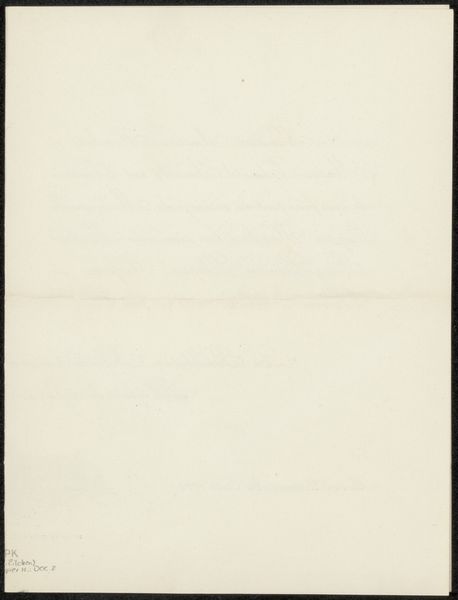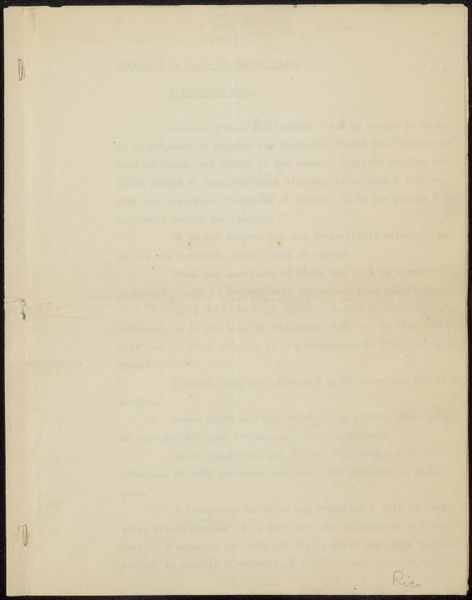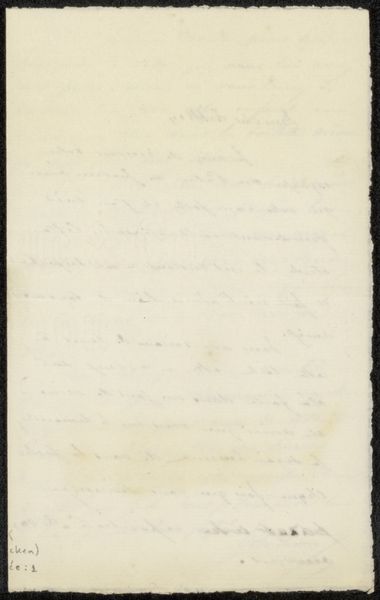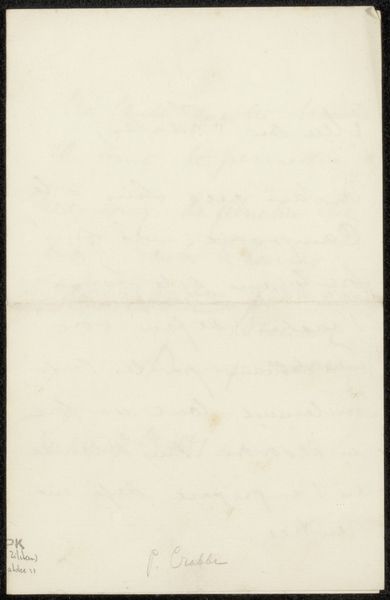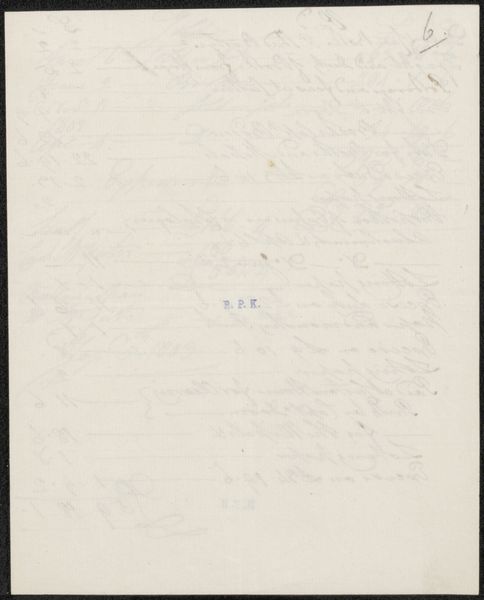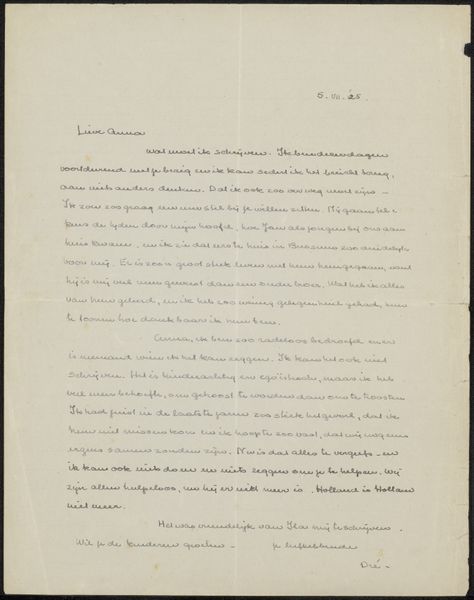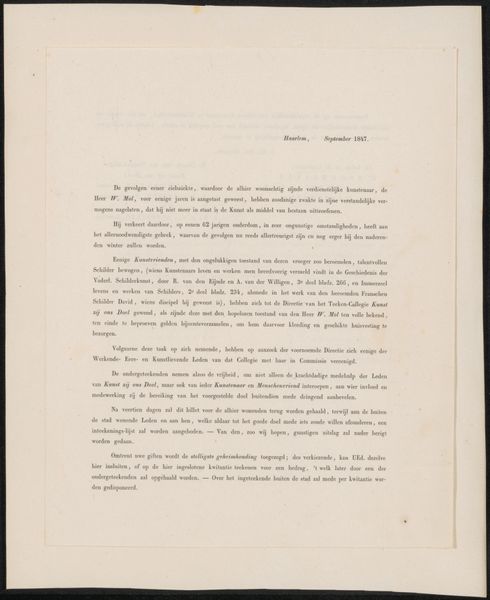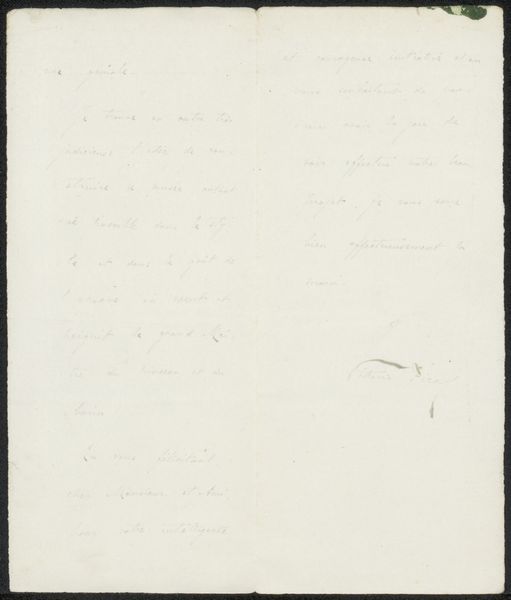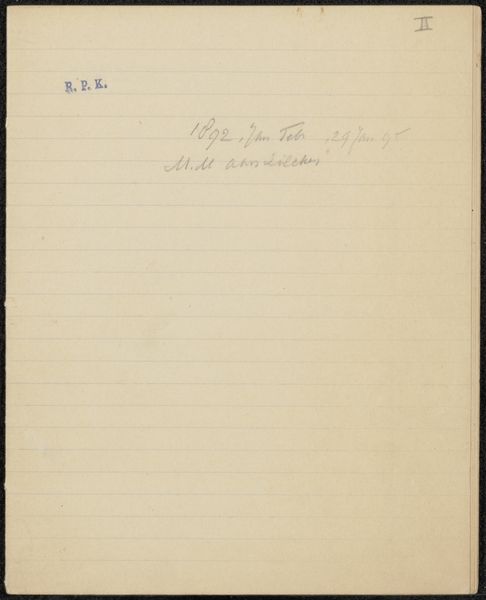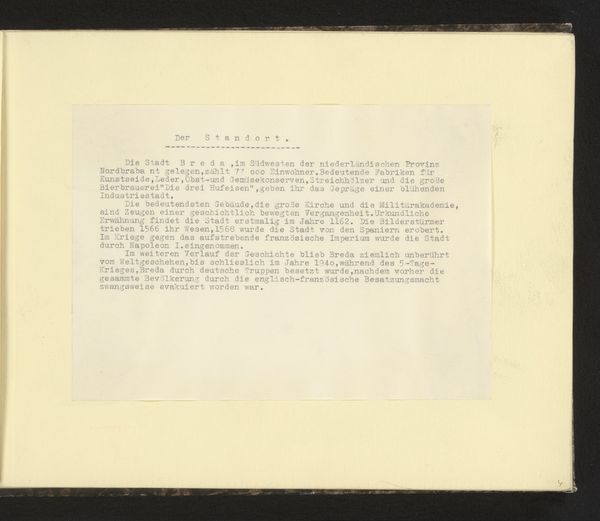
drawing, paper, ink, pen
#
drawing
#
paper
#
ink
#
pen
Copyright: Rijks Museum: Open Domain
Curator: This is a piece entitled "Brief aan August Allebé," or "Letter to August Allebé," possibly dating from 1917 to 1919. It's a drawing made with pen and ink on paper by Jan Veth. Editor: At first glance, it looks like an ordinary sheet of paper filled with writing, almost unassuming. It seems to invite a closer inspection, perhaps even a translation. Curator: The paper itself, its texture and weight, immediately establish a certain intimacy. The torn edges suggests immediacy, like a personal correspondence interrupted or a sentiment meant to be immediately conveyed. The contrast of the dark ink against the pale paper offers an immediate figure-ground relationship. Editor: Considering the potential dating of this piece, it lands squarely in the post-World War I era. Allebé, to whom this letter is addressed, was Veth's former instructor. A personal communication at a time rife with broader social and political tensions invites considering the content as bearing possible traces of wartime experiences and postwar disillusionment, and questions of generational relations. Curator: Interesting, to consider that what on the surface reads as a note takes on more significance when contextualized in a broader societal atmosphere. However, let us also consider Veth’s consistent technical approach throughout his life: a controlled, academic line rendered with pen and ink, regardless of time. The application remains unchanged, and is crucial to consider as its own language. Editor: I appreciate the sensitivity to formal qualities that you've articulated. And I see how that rigor contributes to a reading of sustained artistic intent, independent of the personal content. Still, the raw quality of the handwriting might indicate that this was made during a moment of crisis for the artist. The hurried and spontaneous act of communication. Curator: Both aspects contribute, undoubtedly. As an art object, the composition provides not only textural subtleties, but also intellectual inquiry of context. Editor: Right, I hadn't thought of it in those terms before, but together these qualities emphasize the dialogue that grounds the value of historical insight.
Comments
No comments
Be the first to comment and join the conversation on the ultimate creative platform.

